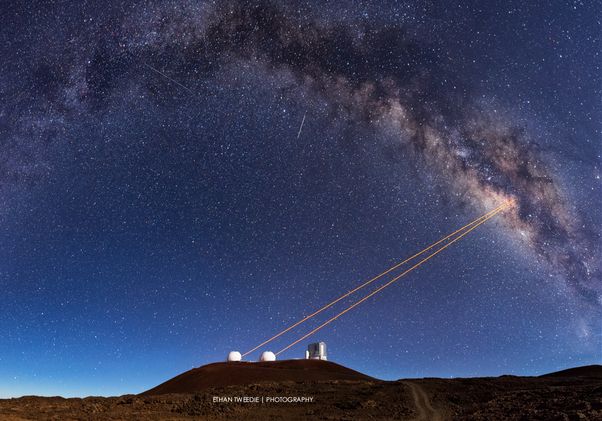The reason the authors believe Einstein’s general theory of relativity is weak is because it cannot fully explain gravity inside a black hole - and though no one has experimented inside a black hole to get measured data they believe the theory must come first, which happened with Einstein but not with Newton.
There is certainly an element of truth to both. When Newton did his groundbreaking work he explained the world according to natural laws but did not have data on planetary gravitation or the sub-atomic world. Gravity does not work according to Newton at the very large or very small. Einstein gave us better understanding with his 1915 general theory of relativity which posited that what we perceive as the force of gravity arises from the curvature of space and time.
The need, say the authors, is an understanding of gravity that works anywhere in the universe, including parts we haven't studied yet. A tall order for any theoretical physicist but an easy way to show gaps in understanding of titans like Newton and Einstein.
The new claims about the state of gravity came from data using a star known as S0-2 which was observed during a 16-year complete around the supermassive black hole at the center of the Milky Way, whose mass is about 4 million times that of the sun.
Spectra analyzed last April, May and September by UCLA professor of physics and astronomy Andrea Ghez and her team show the intensity of light and offer important information about the star from which the light travels. Spectra also show the composition of the star. Those data were combined with measurements have made over the last 24 years.
The researchers studied photons — particles of light — as they traveled from S0-2 to Earth, a journey of 26,000 years. team took measurements about every four nights during crucial periods in 2018 using the Keck Observatory — which sits atop Hawaii’s dormant Mauna Kea volcano at 13,000 feet, above 40 percent of our atmosphere, and houses one of the world’s largest and premier optical and infrared telescopes.

Lasers from the two Keck telescopes point in the direction of the center of our galaxy. Each laser creates an “artificial star” that astronomers can use to correct for the blurring caused by the Earth’s atmosphere. Credit: Ethan Tweedle
READ MORE ABOUT ACTIVIST OPPOSITION TO ASTRONOMY AT MAUNA KEA
Black holes have such high density that nothing can escape their gravitational pull, not even light. They cannot be seen directly, but their influence on nearby stars is visible and provides a signature. Once something crosses the “event horizon” of a black hole, it will not be able to escape, but S0-2 is still rather far from the event horizon, even at its closest approach, so its photons do not get pulled in.
S0-2 moves around the black hole at blistering speeds of more than 16 million miles per hour at its closest approach. Einstein had reported that in this region close to the black hole, photons have to do extra work. Their wavelength as they leave the star depends not only on how fast the star is moving, but also on how much energy the photons expend to escape the black hole’s powerful gravitational field. Near a black hole, gravity is much stronger than on Earth.
They were able to see the co-mingling of space and time near the supermassive black hole. “In Newton’s version of gravity, space and time are separate, and do not co-mingle; under Einstein, they get completely co-mingled near a black hole,” she said.






Comments